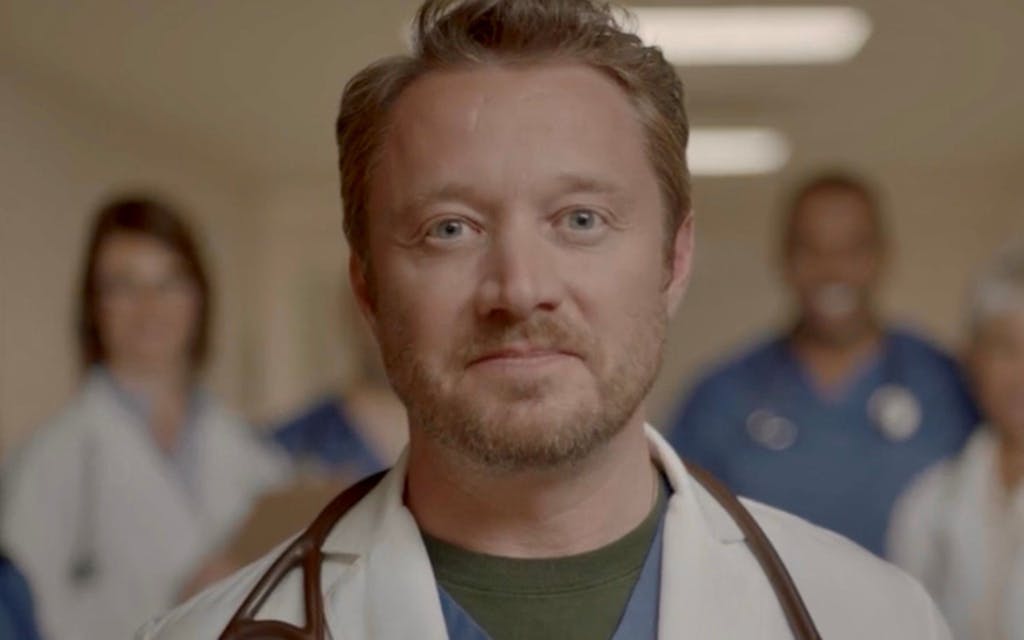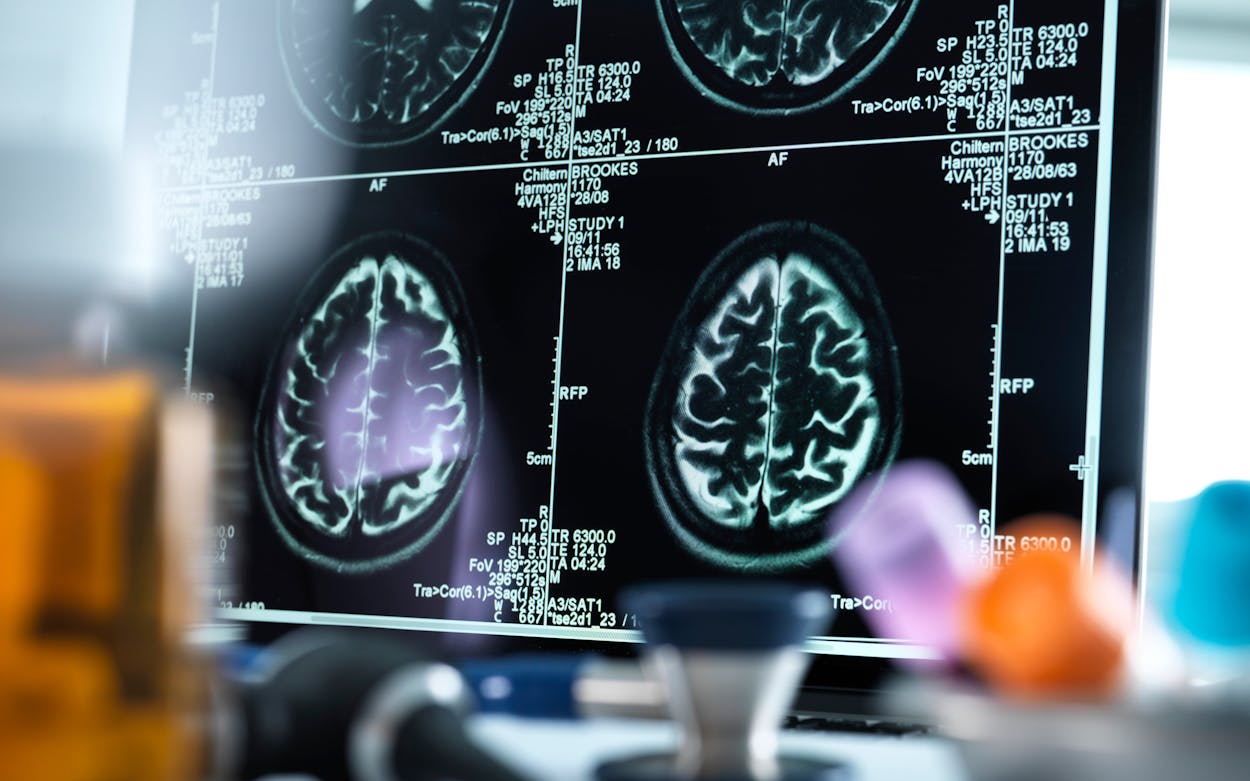Every 40 seconds, someone in the U.S. suffers a stroke—that is nearly 800,000 people every year.
As a part of HCA Healthcare, we collectively respond to strokes 38.3% faster than the national average, says Dr. Richard Logue, senior vice president of emergency services with HCA Houston Healthcare. “At our hospitals, we have protocols and systems in place to rapidly diagnose strokes by type and get people to the right treatment quickly,” he explains. Learn more about the signs, symptoms, and treatment of a stroke from Dr. Logue.

What is a stroke? What are the types of strokes?
A stroke occurs when the blood supply to part of the brain is interrupted or reduced, preventing brain tissue from getting oxygen and nutrients. The three main types of stroke are:
- Ischemic stroke: Occurs when a blood vessel supplying blood to the brain is blocked. It is the most common type and accounts for about 85% of all strokes.
- Hemorrhagic stroke: Occurs when a blood vessel leaks or ruptures. It accounts for about 15% of all strokes.
- Transient ischemic attack (TIA): Called a mini-stroke, occurs when blood supply to part of the brain is briefly blocked and can be a warning sign for future strokes.
Why is it so important to act quickly if you think you or someone you know is having a stroke?
With ischemic strokes, we can give the patient a tissue plasminogen activator (tPA), also known as a clot buster drug, that will dissolve the clot. tPA must be administered within 4.5 hours from the time symptoms start, which is why time is critical.
For large vessel occlusions (LVO), which are major ischemic strokes that cause a loss of blood flow to significant portions of the brain, an interventional radiologist can perform a thrombectomy to remove a blood clot from an artery. This procedure must be done within 24 hours of the onset of stroke symptoms.
How do you quickly screen potential stroke patients in the emergency department (ED)?
When a patient arrives in our ED and is triaged, they are immediately screened for the B.E. F.A.S.T. signs and symptoms. If one of those symptoms is present, we activate Stroke Alert protocol, which immediately draws the team’s attention to that patient. A non-contrast CT is completed within 20 minutes of arrival, and a decision is made regarding whether or not immediate interventions are warranted.
What are the risk factors for having a stroke?
Whether or not your risk factors are in your control, knowing what the risk factors are is important. Risk factors for stroke include hypertension, diabetes, smoking, obesity, high cholesterol, excessive alcohol intake, lack of exercise, irregular heartbeat (atrial fibrillation), demographics like race, gender and age, and whether you have a past history of a TIA.
Women have a higher stroke risk, primarily because stroke risk increases with age and women on average live longer. Other risk factors particular to women, especially those who smoke, include high blood pressure during pregnancy or preeclampsia, birth control pills, and hormone replacement therapy.
What are the signs and symptoms of stroke?
An easy way to remember the warning signs is by using the B.E. F.A.S.T. method:
- Balance – Can you maintain your balance or coordination?
- Eyes – Is your vision suddenly affected?
- Face – Is one side of your face drooping or is there an imbalance there?
- Arms – Can you raise both arms without one arm drifting down?
- Speech – Are you suddenly having difficulty speaking? Does your speech sound slurred?
- Time – Call 9-1-1 immediately if any of these signs develop.
Are the signs of stroke different for men and women?
Women have more risk factors than men, and the symptoms of stroke can be a bit less clear for them. They can present with atypical symptoms beyond B.E. F.A.S.T. Women may feel weak all over, be confused and disoriented, feel fatigued, or experience nausea or vomiting. Because these symptoms are unique to women, it may be difficult to immediately connect them to stroke.
What are things people can do to prevent a stroke?
The best way to prevent a stroke is to manage and treat the risk factors you can control. See your doctor regularly and take all medication as prescribed. You should also make healthy food choices, stop smoking, exercise more, and reduce alcohol intake to a moderate level.






